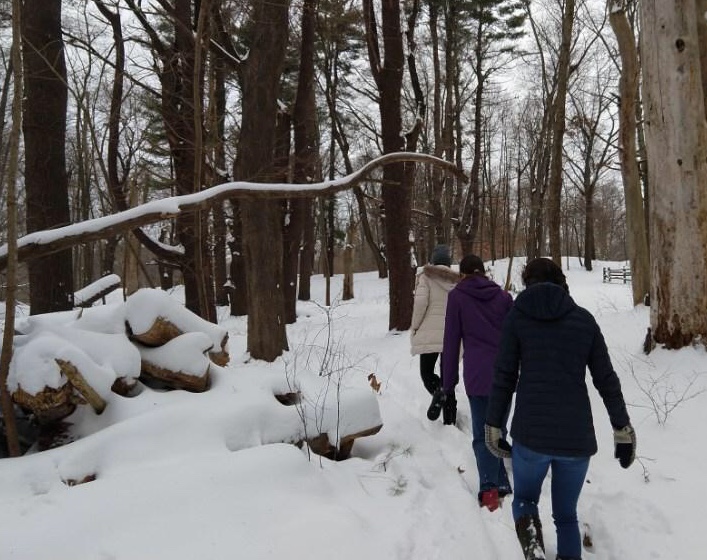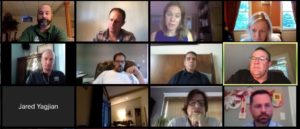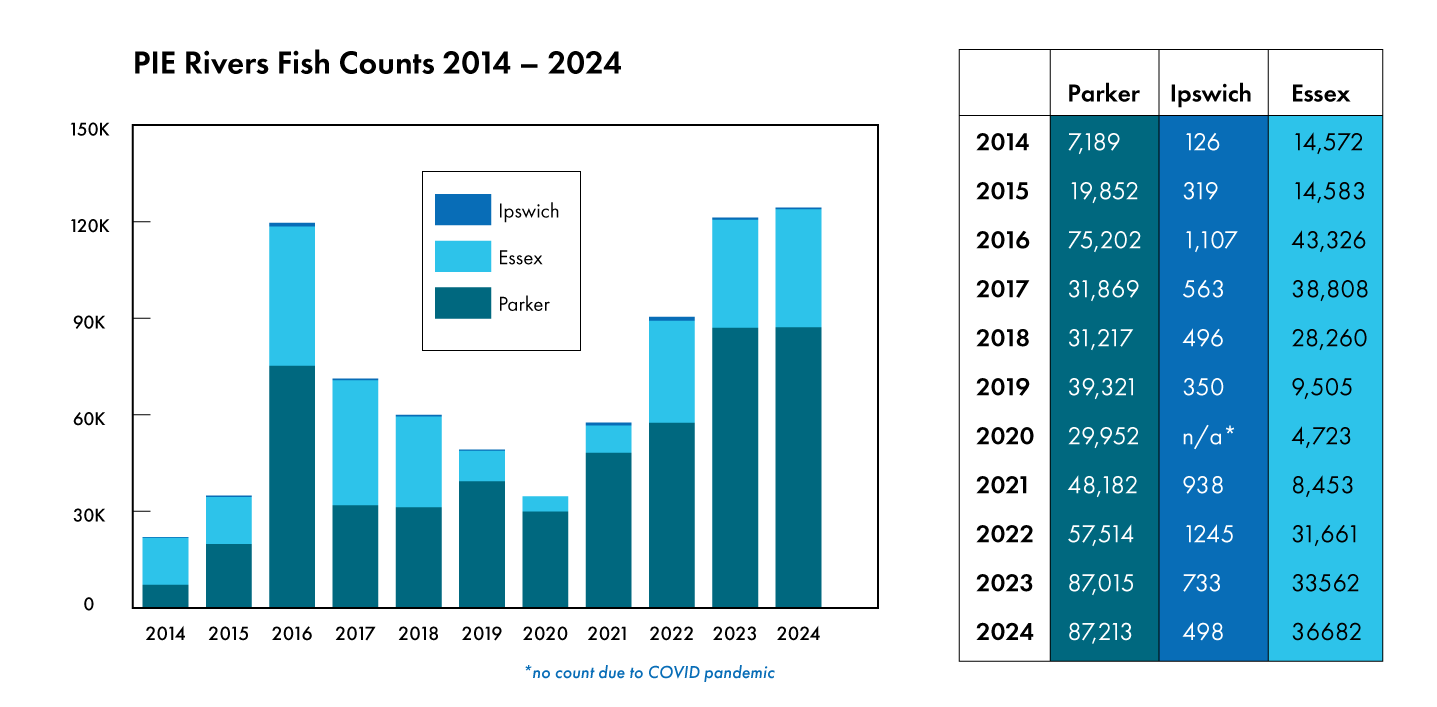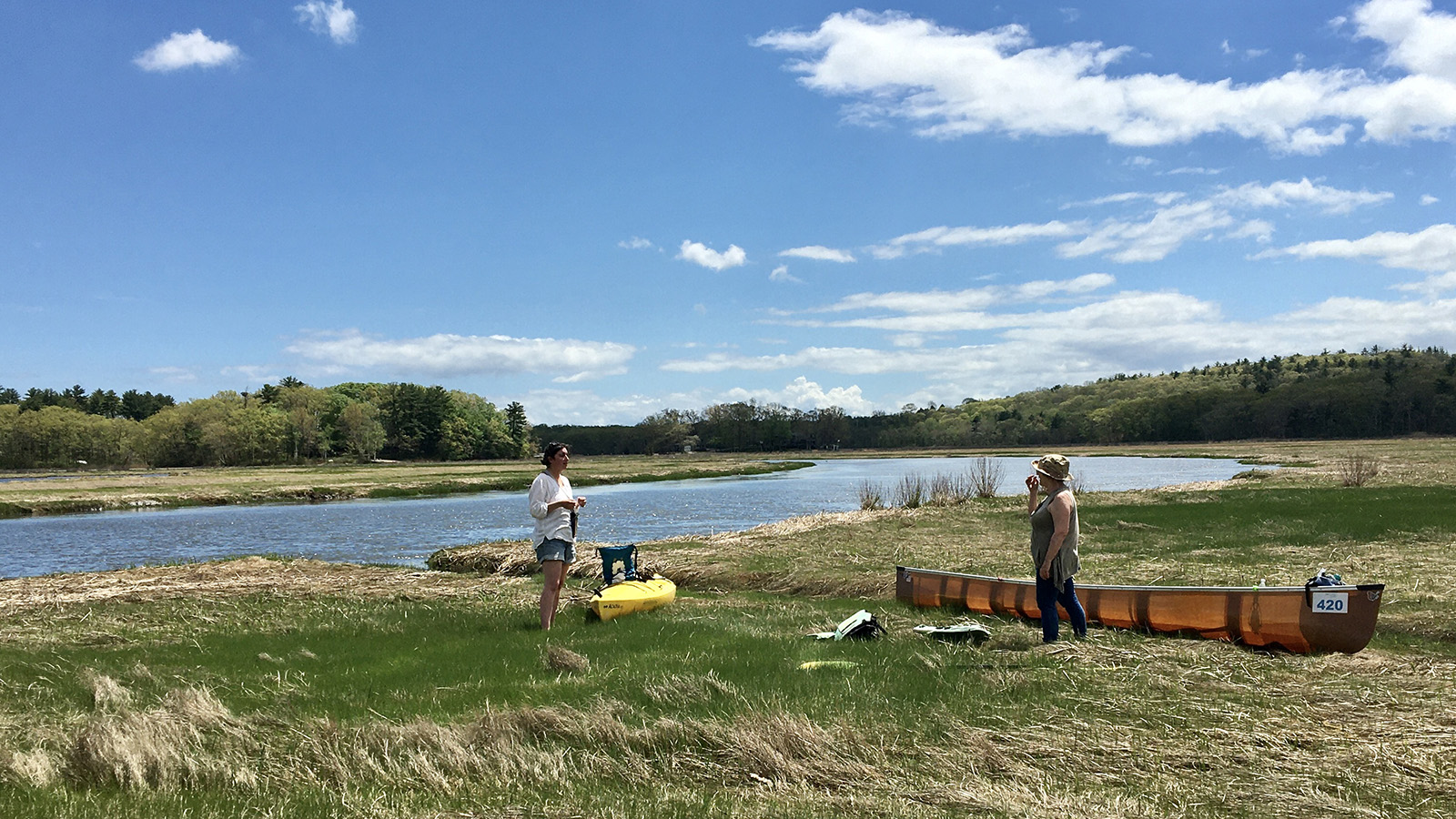Following the recent clearing at Alewife Brook to improve fish passage, many people have been…

The Future of PIE-Rivers: Engaging Youth to Address Climate Action
Editor’s Note: This piece offers a fresh perspective to how we think about the Future of the PIE-Rivers Restoration Partnership. The author, Sadie Woodward, is a rising Junior at Wheaton College, studying Environmental Policy and Science. She is a resident of Rowley, MA.
The world needs Green New Deal principles implemented at all levels. We need jobs. We need better infrastructure. We need greener cities and towns. We need better planning that looks to the future. And we need to get young people involved.
This year I worked as a fellow for Ed Markey’s re-election campaign. It was an excellent opportunity to learn about the Green New Deal and see an environmentally conscious politician in action. I am also interning at the Ipswich River Watershed Association. Ipswich River and its PIE-Rivers Partners are examples of how local groups here in Massachusetts can do their part to address climate resiliency at the watershed scale.
Through PIE-Rivers, I work on reports detailing climate impacts in our region. I hear from experts who understand the problems we face, but don’t necessarily prioritize reaching younger residents who could be their strongest allies. I’ve had a virtual seat at the table, attending town meetings and seeing how our officials and residents talk about environmental issues.
In these meetings, changes are happening. Decisions are being made. But I can’t help notice I am often the only youth representative. Important perspectives are left out, at a time when we are in dire need of an aggressive approach to climate change.
So how can we open up the room?
Engaging Young Professionals
One room I joined was the annual meeting of the Parker-Ipswich-Essex Rivers Restoration Partnership. This year, over 40 people working on restoration and planning projects across the North Shore participated. Several attendees were young professionals, new to the Partnership. These new faces will continue carrying on this important work, while also serving as a bridge to younger residents like myself.
Another meeting I joined was a joint meeting between the Town of Lynnfield Conservation Commission and their Planning Board. Residents in this important Headwaters Community are hoping to protect a key piece of forested land. In a recent survey, nearly 500 residents responded, with 85% urging their Town to purchase the 20-acre parcel.
Many of the volunteer residents on these boards are relatively young, or are parents of young children. When they speak, they talk about the future and the changes that will come. This is a great example of Green New Deal principles implemented at the local level.
One of the new members of the Lynnfield Conservation Commission, Jared Yagjian, said “This is a parcel that matters. This to me is the parcel that we need to target and focus on.” Kate Flaws, an active member of the Lynnfield Planning Board, has been a driving force behind protecting the land. Flaws is researching carbon offset programs, state grants, and other ways the Town can meet its open space goals while also protecting drinking water and the Ipswich River. “We are probably the last generation of established adults who have the opportunity to head off additional and catastrophic average global temperature rise.” Flaws also talks of how legislation at the national level is not enough to confront climate change. “We must throw everything we have at the problem all at once.”
Then there’s David Henriques, who like me is in college. Henriques is a Lynnfield resident and junior at Clark University majoring in Environmental Sciences, who asked the Planning Board how he could help. He ended up putting together a Storymap as a visual tool to show why protecting open space is so important. The Storymap was launched in advance of an important Board of Selectmen meeting to help inform residents about what’s at stake.
It’s inspiring to see how people who care about their town are stepping up. But from my perspective as a young activist, aside from exceptions like the ones above, the urgency of the climate crisis is often understated. This urgency is essential when making decisions that impact future generations, even if they are on a small scale. Though the actions I see are aligned with my values, in future meetings fresh voices would be a valuable addition.
We can translate urgency into policy by getting youth involved in all parts of government.
Three Ways to Engage Youth
For starters, I propose three ways younger generations can get involved in local environmental policymaking.
- Junior Members. Junior member positions could be opened up for town planning boards, conservation commissions, and environmental non-profits. This would ensure someone with the youth perspective can weigh in on discussions.
- Climate Cafes. We could support expanding a local network I’ve joined called the Climate Cafes. Climate Cafes get high school students talking about environmental issues and strengthening our leadership skills. Students from a few schools in the area have joined, but expanding our range would allow more involvement in local conversations about the environment.
- High School Alerts. Finally, we could alert high school environmental clubs when town decisions or discussions are coming up and invite them to participate as residents. This would attract interested students looking to speak up, and would encourage them. The shift to virtual government we saw this year makes it easier than ever for a busy high school student to get involved.
Why We Need The Youth Perspective
One reason I love the Green New Deal is it acknowledges the urgency upcoming generations have today. The Green New Deal is a serious call to change the status quo and face our problems head-on.
We need to tackle climate change at the level we can handle. There has been push-back against significant climate action for a long time. We don’t know when we’ll get a national Green New Deal like the one proposed by Ed Markey and Alexandria Ocasio-Cortez. One thing I learned during Senator Markey’s re-election campaign is that citizens have the power to bring about the results they want if they come together. The Markey campaign rallied young people behind his call for strong environmental action. In the end he received more votes than his young opponent.
Communities can’t keep trying to solve big problems without young people. We understand the gravity of the impending climate crisis. As we start playing greater roles in our communities, we will become ambassadors for our generation. We can help share that urgency with our elected officials.
The key to putting an end to the climate crisis is to include all perspectives in every conversation.





Comments (0)